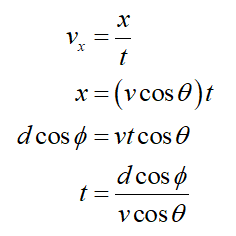A skier leaves the ramp of a ski jump with a velocity of v = 10.0 m/s at 0 = 15.0° above the horizontal as shown in Figure P4.49 (page 94). The slope where she will land is inclined downward at o = 50.0°, and air resistance is neg- ligible. Find (a) the distance from the end of the ramp to where the jumper lands and (b) her velocity components just before the landing. (c) Explain how you think the results might be affected if air resistance were included.
A skier leaves the ramp of a ski jump with a velocity of v = 10.0 m/s at 0 = 15.0° above the horizontal as shown in Figure P4.49 (page 94). The slope where she will land is inclined downward at o = 50.0°, and air resistance is neg- ligible. Find (a) the distance from the end of the ramp to where the jumper lands and (b) her velocity components just before the landing. (c) Explain how you think the results might be affected if air resistance were included.
Related questions
Question

Transcribed Image Text:49. (a) 43.2 m (b) (9.66î – 25.6 j) m/s (c) Air resistance
would ordinarily make the jump distance smaller and the
final horizontal and vertical velocity components both
somewhat smaller. If a skilled jumper shapes her body
into an airfoil, however, she can deflect downward the air
through which she passes so that it deflects her upward,
giving her more time in the air and a longer jump.
2L/c
-

Transcribed Image Text:CHALLENGE PROBLEMS
49. A skier leaves the ramp of a ski jump with a velocity of
QIC v = 10.0 m/s at 0
15.0° above the horizontal as shown
in Figure P4.49 (page 94). The slope where she will land is
inclined downward at o = 50.0°, and air resistance is neg-
ligible. Find (a) the distance from the end of the ramp to
where the jumper lands and (b) her velocity components
just before the landing. (c) Explain how you think the
results might be affected if air resistance were included.
Figure P4.49
Expert Solution
Step 1
(a)
Let d denote the distance travelled by the skier along the ramp. Then, the x-distance is dcosϕ and the y-distance is –dsinϕ (downwards).
The skier’s projectile motion faces no horizontal acceleration and the gravitational acceleration (g) vertically downwards.
Their initial vertical and horizontal speeds are the sine- and cosine- components of v with respect to θ, respectively.
Solve the constant horizontal speed (vx) formula for the time (t) when the skier lands as follows:

Trending now
This is a popular solution!
Step by step
Solved in 4 steps with 3 images
